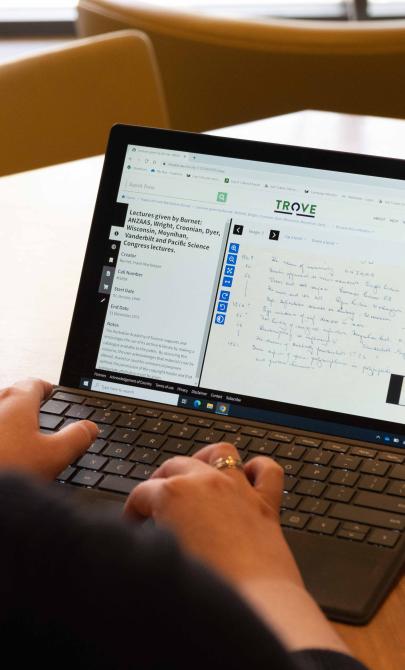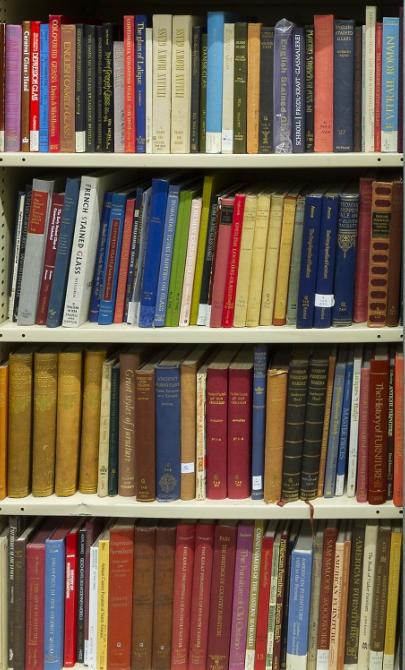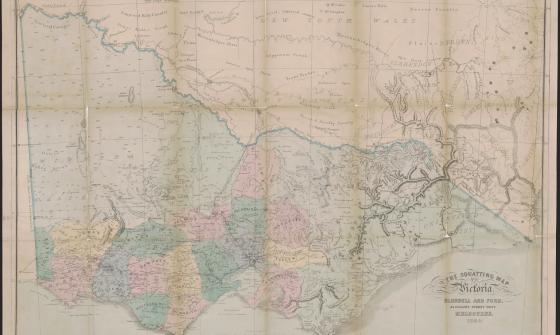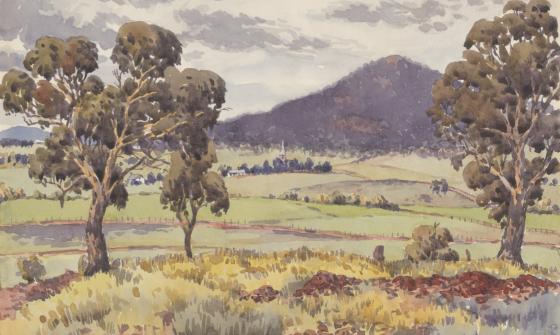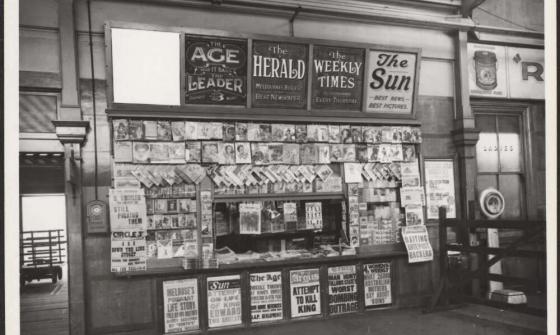Electoral rolls research guide
What information is in electoral rolls
Electoral rolls list people who are registered and eligible to vote at federal, state, territory and local government elections and referenda.
Australian electoral rolls contain the following details on each registered voter:
- name
- address
- occupation (omitted after 1983)
- gender
Key moments in Australia's voting rights history
- 1902: The Commonwealth Franchise Act granted voting rights to most men and women over 21, excluding Aboriginal and Torres Strait Islander people. Voting rights for women in state elections varied.
- 1911: Compulsory enrolment introduced.
- 1962: Aboriginal and Torres Strait Islander people gained the right to vote in Commonwealth elections. Enrolment was voluntary, but voting became compulsory once enrolled.
- 1984: Compulsory enrolment and voting extended to Aboriginal and Torres Strait Islander people.
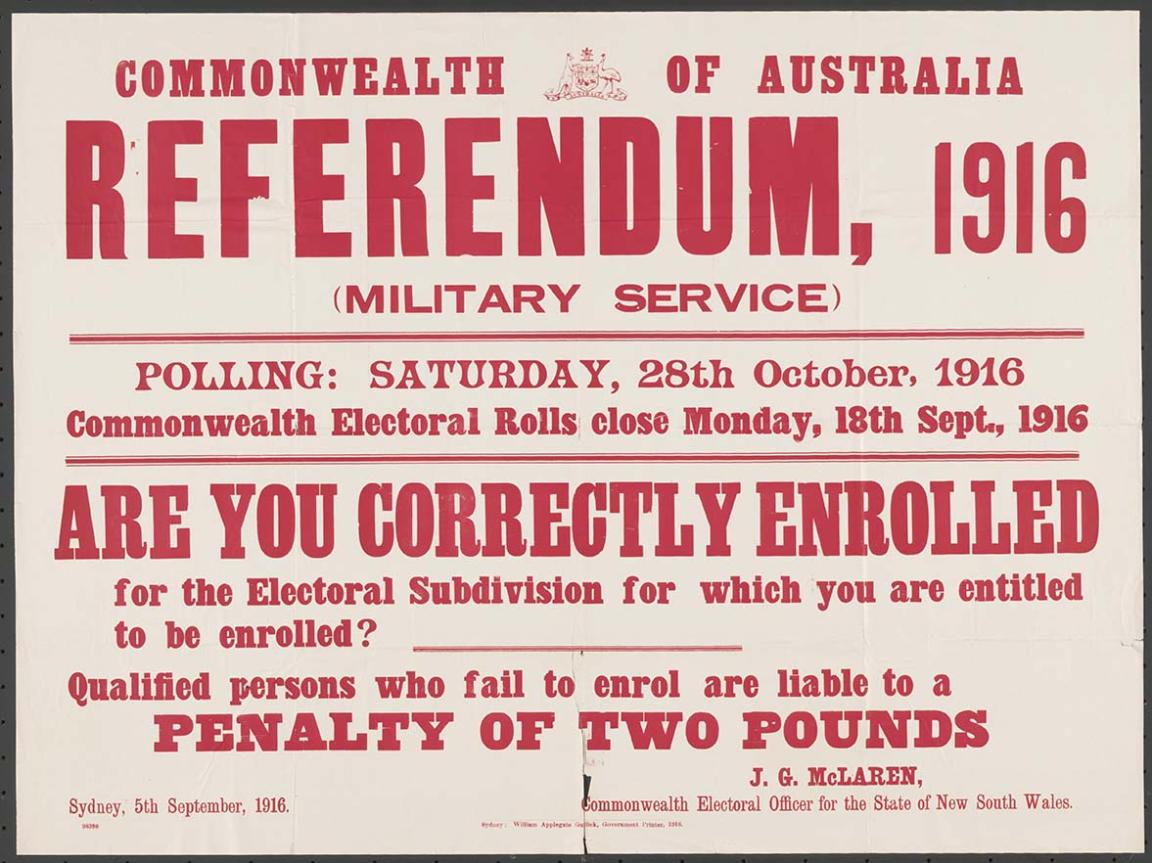
McLaren, J. G and Commonwealth Electoral Office (Australia) issuing body, Referendum, 1916 (military service) : are you correctly enrolled for the electoral subdivision for which you are entitled to be enrolled? Sydney, 1916, nla.gov.au/nla.obj-348412875
McLaren, J. G and Commonwealth Electoral Office (Australia) issuing body, Referendum, 1916 (military service) : are you correctly enrolled for the electoral subdivision for which you are entitled to be enrolled? Sydney, 1916, nla.gov.au/nla.obj-348412875
Find state and territory electoral rolls
We hold a comprehensive run of historical Commonwealth electoral rolls dating from 1903.
Before Federation and for some years afterwards, there were separate rolls for Commonwealth and for state elections. The Commonwealth Electoral Commission now produces these rolls for each state. A separate state roll is still maintained by Western Australia.
Looking for current electoral rolls?
An Australia wide electronic version of the current Australian Electoral Roll is available for viewing at any Australian Electoral Commission (AEC) National or State Office. Individual AEC Division Offices only have the roll for that Division available. The AEC also provides information on Australian electoral history, past federal electoral events, referenda, Aboriginal and Torres Strait Islander Commissions' elections and more. Find out more on the AEC website.
You can access historical ACT electoral rolls in the Library via eResources and in microfiche and print formats.
Background tip
From 2016 Norfolk Island was in the Australian Capital Territory (A.C.T.) Division of Canberra. From 2018, Norfolk Island has been included in the ACT Division of Bean.
eResources
To use our Ancestry (Library Edition) subscription, you need to visit the Library in person. Find out more about how to access eResources.
- Ancestry (Library Edition) ACT electoral rolls (1928-1980)
Microfilm/microfiche
You can access microfilm for free in the Library's Newspapers and Family History Reading Room. ACT electoral rolls on microfiche available from 1928. They are in the general electoral rolls microfiche cabinet.
Years available:
- 1928, 1929
- 1930, 1931, 1935, 1937, 1939
- 1941, 1943, 1945, 1947, 1949
- 1951, 1953, 1954, 1955, 1957, 1958, 1959
- 1961, 1963, 1964, 1965, 1966, 1967, 1968, 1969
- 1970, 1971, 1972, 1973, 1974, 1975, 1977, 1978, 1979
- 1980, 1982, 1983, 1984, 1988, 1989
- 1990, 1991, 1992, 1993, 1994, 1995, 1996, 1997, 1998, 1999
- 2000, 2001, 2002, 2003, 2004, 2005, 2006, 2007, 2008*
*only available via manual request at the Library's Newspapers and Family History Reading Room information desk.
Print publications
The Library holds many of the original printed ACT electoral rolls which are bound according to year and electoral division. Printed electoral rolls are stored offsite at our warehouse. To access them, you need to request them via the catalogue. We recommend you access these records on microfilm.
Background tips
On the 19th of February 1930, New South Wales ceased maintaining a separate state electoral roll in favour of a joint roll produced by the Commonwealth.
Prior to 1990 Lord Howe Island residents were listed on the roll for the Division of Sydney.
eResources
To use our Ancestry (Library Edition) and Findmypast (World edition) subscriptions, you need to visit the Library in person. Find out more about how to access eResources.
- Ancestry (Library Edition) NSW electoral rolls (1930-1980)
- FindMyPast NSW electoral rolls (1903, 1913 & 1935 only)
Microfilm and microfiche
You can access microfilm/microfiche for free in the Library's Newspapers and Family History Reading Room.
NSW electoral rolls on microfilm are in our microfilm cabinet drawer after the SAG Parish Register collection. Years available:
- 1842-1899
- 1900
NSW electoral rolls on microfiche are in the general electoral rolls microfiche cabinet. Years available:
- 1842-1864
- 1903, 1906, 1908, 1909
- 1913, 1915, 1916, 1917, 1919
- 1921, 1922, 1925, 1926, 1928
- 1930, 1931, 1932, 1933, 1934, 1935, 1936, 1937, 1938, 1939
- 1940, 1941, 1943, 1944, 1946, 1947, 1948, 1949
- 1950, 1951, 1953, 1954, 1955, 1958, 1959
- 1960, 1961, 1963, 1964, 1965, 1966, 1967, 1968, 1969
- 1970, 1972, 1973, 1974, 1975, 1976, 1977, 1978, 1979
- 1980, 1981, 1982, 1983, 1984, 1986, 1988, 1989
- 1990, 1991, 1992, 1993, 1994, 1995, 1996, 1997, 1998, 1999
- 2000, 2001, 2002, 2003, 2004, 2005, 2006, 2007, 2008
Print publications
The Library holds many of the original printed NSW electoral rolls which are bound according to year and electoral division. Printed electoral rolls are stored offsite at our warehouse and to access them, you need to request them via the catalogue. We recommend you access these records on microfilm instead.
Background tips
From 1912 until 1922 Northern Territory electors were not on any electoral rolls.
From 1984 residents of the Cocos Islands and Christmas Island are listed on the Northern Territory electoral roll. Previously, residents of those islands did not vote in Federal elections.
eResources
To use our Ancestry (Library Edition) and Findmypast (World Edition) subscriptions, you need to visit the Library in person. Find out more about how to access eResources.
- Ancestry (Library Edition) NT electoral rolls 1922-1980
- FindMyPast (1895, 1906, 1922, 1928, 1929, 1930, 1931, 1934, 1937, 1940)
Microfilm/microfiche
You can access microfilm for free in the Library’s Newspapers and Family History Reading Room. NT electoral rolls on microfiche available from 1922. They are in the general electoral rolls microfiche cabinet.
Years available:
- 1922, 1928, 1929
- 1930, 1931, 1934, 1937
- 1940, 1943, 1946, 1947, 1949
- 1951, 1954, 1955, 1957, 1958
- 1960, 1961, 1962, 1963, 1965, 1966, 1968, 1969
- 1970, 1971, 1972, 1974, 1975, 1977, 1979
- 1980, 1983, 1984, 1986, 1988, 1989
- 1990, 1991, 1992, 1993, 1994, 1995, 1996, 1997, 1998, 1999
- 2000, 2001, 2002, 2003, 2004, 2005, 2006, 2007, 2008
Print publications
The Library holds many of the original printed NT electoral rolls which are bound according to year and electoral division. Printed electoral rolls are stored offsite at our warehouse. To access them, you need to request them via the catalogue. We recommend you access these records on microfilm.
Background tip
In 1992 Queensland ceased maintaining a separate State electoral roll in favour of a joint roll produced by the Commonwealth. Electoral rolls were issued annually in Queensland until 1975, after which time they were issued as required.
eResources
To use our Ancestry (Library Edition) and Findmypast (World Edition) subscriptions, you need to visit the Library in person. Find out more about how to access eResources.
- Ancestry (Library Edition) (1903-1980)
- FindMyPast (1860-1959 various)
Microfilm/microfiche
You can access microfilm/microfiche for free in the Library’s Newspapers and Family History Reading Room.
QLD electoral rolls on microfilm are in the microfilm cabinet drawer marked Queensland. Years available:
- 1860, 1861, 1862, 1863, 1864, 1865, 1866, 1867, 1868, 1869
- 1870, 1871, 1875, 1876, 1877, 1878, 1879
- 1880, 1881, 1882, 1883, 1884, 1885, 1886, 1887, 1888, 1889
- 1890, 1891, 1892, 1893, 1894, 1895, 1896, 1897, 1898, 1899
- 1900
QLD electoral rolls on microfiche are available from 1903. They are in the general electoral rolls microfiche cabinet. Years available:
- 1903, 1904, 1905, 1906, 1907, 1908, 1909
- 1910, 1911, 1912, 1913, 1914, 1915, 1916, 1917, 1918, 1919
- 1920, 1921, 1922, 1925, 1926, 1927, 1928, 1929
- 1930, 1931, 1932, 1933, 1934, 1935, 1936, 1937, 1939
- 1940*, 1941, 1942, 1943, 1944, 1945, 1946, 1948, 1949
- 1950, 1951, 1952, 1953, 1954, 1955, 1956, 1957, 1958, 1959
- 1960, 1961, 1963, 1964, 1965, 1966, 1967,1968, 1969
- 1970, 1972, 1973, 1974, 1975, 1976, 1977, 1978, 1979
- 1980, 1981,1982, 1983, 1984, 1988, 1989
- 1990, 1991, 1992, 1993, 1994, 1995, 1996, 1997, 1998, 1999
- 2000, 2001, 2002, 2003, 2004, 2005, 2006, 2007, 2008
Print publications
The Library holds many of the original printed QLD electoral rolls which are bound according to year and electoral division. Printed electoral rolls are stored offsite at our warehouse. To access them, you need to request them via the catalogue. We recommend you access these records on microfilm.
Background tip
On 23 December 1920, South Australia ceased maintaining a separate State electoral roll in favour of a joint roll produced by the Commonwealth.
eResources
To use our Ancestry (Library Edition) and Findmypast (World Edition) subscriptions, you need to visit the Library in person. Find out more about how to access eResources.
- Ancestry (1939, 1941, 1943-51 only)
- FindMyPast (1939, 1941 & 1943 only)
Microfilm/microfiche
You can access microfilm/microfiche for free in the Library’s Newspapers and Family History Reading Room. SA electoral rolls on microfiche are available from 1905. They are in the general electoral rolls microfiche cabinet. Years available:
- 1905, 1909
- 1911, 1912, 1913, 1914, 1915, 1916, 1917, 1919
- 1921, 1922, 1924, 1925, 1926, 1927, 1928
- 1930, 1931, 1933, 1934, 1936, 1937, 1938, 1939
- 1941, 1943, 1946, 1949
- 1950, 1952, 1954, 1955, 1958
- 1970, 1971, 1972, 1973, 1974, 1975, 1977, 1979
- 1980, 1982, 1983, 1984, 1985, 1987, 1988 (August), 1989 (February & August)
- 1990 (February), 1991 (February & August), 1992 (February & August), 1993 (February), 1994 (February & August), 1995 (February & August), 1996 (February & August), 1997 (February & August), 1998 (February & August), 1999 (February & August)
- 2000 (February & August), 2001 (February, July & October), 2002 (January & July), 2003 (January & August), 2004 (February & June), 2005 (February), 2006 (January), 2007 (April), 2008 (January)
Print publications
The Library holds many of the original printed SA electoral rolls which are bound according to year and electoral division. Printed electoral rolls are stored offsite at our warehouse. To access them, you need to request them via the catalogue. We recommend you access these records on microfilm/microfiche.
Background tip
On 13 of March 1912, Tasmania ceased maintaining a separate State electoral roll in favour of a joint roll produced by the Commonwealth.
eResources
To use our Ancestry (Library Edition) and Findmypast (World Edition) subscriptions, you need to visit the Library in person. Find out more about how to access eResources.
- Ancestry (Library Edition) (1914-1980)
- FindMyPast (1916, 1934, 1943)
Microfilm/microfiche
You can access microfilm/microfiche for free in the Library’s Newspapers and Family History Reading Room.
TAS electoral rolls on microfilm are in the microfilm cabinet drawer marked Tasmania 1. Years available:
- 1856-1861-2
- 1866-7, 1867-8, 1869-70
- 1870-1, 1873-4, 1875-6, 1878-9, 1879-80
- 1881-2, 1883-4, 1884-5, 1886, 1887-8, 1888-9
- 1890-1, 1899-1900
- 1905, 1906, 1909, 1910, 1912, 1913
TAS electoral rolls on microfiche are available from 1914. They are in the general electoral rolls microfiche cabinet. Years available:
- 1914, 1915, 1916, 1917, 1919
- 1921, 1922, 1925, 1928, 1929
- 1930, 1931, 1934, 1936, 1937, 1939
- 1941, 1944, 1946, 1948, 1949
- 1951, 1953, 1954, 1955, 1956, 1958
- 1960, 1961, 1963, 1964, 1965, 1966, 1967, 1968, 1969
- 1970, 1972, 1973, 1974, 1975, 1976, 1977, 1979
- 1980, 1982, 1984, 1988 (April), 1989
- 1990 (February & December), 1991 (May & November), 1992 (May), 1993 (February & June), 1994 (January & August), 1995 (February & August), 1996 (February & November) 1997 (February & August), 1998 (February & August), 1999 (February & August)
- 2000 (February & August), 2001 (February, July & October), 2002 (January & July), 2003 (January & August), 2004 (February & June), 2005 (February), 2006 (January), 2007 (April), 2008 (January)
Print publications
The Library holds many of the original printed TAS electoral rolls which are bound according to year and electoral division. Printed electoral rolls are stored offsite at our warehouse. To access them, you need to request them via the catalogue. We recommend you access these records on microfilm.
Background tip
Victoria ceased maintaining a separate State electoral roll on 31 January 1924, after which a joint electoral roll arrangement was entered into with the Commonwealth (as notified in the Commonwealth Gazette).
eResources
To use our Ancestry (Library Edition) and Findmypast (World Edition) subscriptions, you need to visit the Library in person. Find out more about how to access eResources.
- Ancestry (Library Edition) (1856, 1903-1980)
- FindMyPast (1939 and 1946 only)
Microfilm/microfiche
You can access microfilm/microfiche for free in the Library’s Newspapers and Family History Reading Room.
VIC electoral rolls on microfiche are available from 1841 to 1851. They are in the general electoral rolls microfiche cabinet. Years available:
- 1841-1851
- 1851, 1856-57
- 1899 (Federal Referendum roll)
- 1903, 1905, 1906, 1908, 1909
- 1910, 1912, 1913, 1914, 1915, 1916, 1917, 1918, 1919
- 1920, 1921, 1922, 1924, 1925, 1926, 1927, 1928, 1929
- 1931, 1933, 1934, 1935, 1936, 1937, 1938, 1939
- 1940, 1941, 1943, 1944, 1945, 1946, 1947, 1948
- 1950, 1951, 1952, 1953, 1955, 1956, 1957, 1958, 1959
- 1960, 1961, 1963, 1964, 1965, 1966, 1967, 1968, 1969
- 1970, 1972, 1973, 1974, 1975, 1976, 1977, 1978, 1979
- 1980, 1981, 1982, 1985, 1988, 1989
- 1990, 1991, 1992, 1993, 1994, 1995, 1996, 1997, 1998, 1999
- 2000, 2001, 2002, 2003, 2004, 2005, 2006, 2007, 2008
Print publications
The Library holds many of the original printed VIC electoral rolls which are bound according to year and electoral division. Printed electoral rolls are stored offsite at our warehouse. To access them, you need to request them via the catalogue. We recommend you access these records on microfilm.
Background tip
Western Australia is the only state which continues to maintain its own state electoral roll, independent of the Commonwealth electoral roll.
eResources
To use our Ancestry (Library Edition) and Findmypast (World Edition) subscriptions, you need to visit the Library in person. Find out more about how to access eResources.
- Ancestry (Library Edition) (1903-1980)
- FindMyPast (1939, 1943 and 1949 only)
Microfilm/microfiche
You can access microfilm/microfiche for free in the Library’s Newspapers and Family History Reading Room.
WA electoral rolls on microfiche are available from 1903. They are in the general electoral rolls microfiche cabinet.
Years available:
- 1903, 1905, 1906, 1909
- 1910, 1912, 1913, 1914, 1915, 1916, 1917, 1918, 1919
- 1920, 1921, 1922, 1925, 1926, 1928, 1929
- 1930, 1931, 1932, 1933, 1934, 1935, 1936, 1937, 1938, 1939
- 1940, 1941, 1942, 1943, 1944, 1945, 1946, 1947, 1948, 1949
- 1950, 1951, 1952, 1953,1954, 1955, 1956, 1957, 1958, 1959
- 1960, 1961, 1962, 1963, 1964, 1965, 1966, 1967, 1968, 1969
- 1970, 1972, 1973, 1974, 1975, 1976, 1977, 1978, 1979
- 1980, 1981, 1982, 1983, 1984, 1988,1989
- 1990, 1991, 1992, 1993, 1994, 1995, 1996, 1997, 1998, 1999
- 2000, 2001, 2002, 2003, 2004, 2005, 2006, 2007, 2008
Print publications
The Library holds many of the original printed WA electoral rolls which are bound according to year and electoral division. Printed electoral rolls are stored offsite at our warehouse. To access them, you need to request them via the catalogue. We recommend you access these records on microfilm/microfiche instead.
How to access and search electoral rolls
There is a gap in the electoral records between 1985 and 1987 when rolls were not published. No microfiche copies have been received since January 2008, and printed rolls have not been received since 2009.
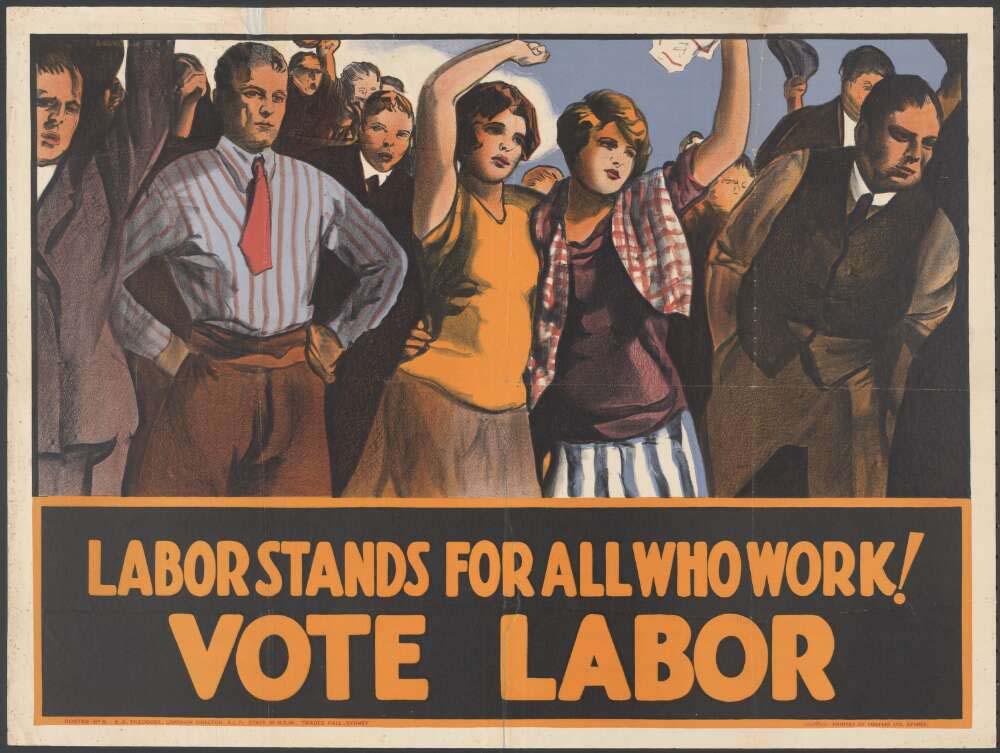
Australian Labor Party. New South Wales Branch & Theodore, E. G & Posters Ltd. Labor stands for all who work! Vote Labor, 1928, nla.gov.au/nla.obj-135796305
Australian Labor Party. New South Wales Branch & Theodore, E. G & Posters Ltd. Labor stands for all who work! Vote Labor, 1928, nla.gov.au/nla.obj-135796305
Search the catalogue
To find entries for state and territory electoral rolls, search the catalogue using the exact term “voting registers – [state or territory name] – periodicals” (with quotation marks).
For example:
- "voting registers - australian capital territory - periodicals"
- "voting registers - new south wales - periodicals"
- "voting registers - south australia - periodicals"
Check the electorate (division) or sub-division
To determine the electorate (division) or sub-division for a person based on a known city, town, or locality you can use:
- the Commonwealth of Australia, 1901-1988, Electoral Redistributions [Atlas] in the Newspapers and Family History zone
- Alphabetical List of Polling Places by State in the drawer marked ‘Electoral Rolls 1’ of the electoral rolls microfiche cabinet in the Newspapers and Family History zone.
Find a name
Once you’ve located the electoral roll, you need to find a name.
- Before 1990: voters are listed alphabetically by surname and first name within each sub-division of an electoral division for each state or territory.
- After 1990: voters are listed alphabetically by surname and first name within each state or territory.
Get help with your research
Our specialist staff can help you with your research, to locate resources and to use our microfilm and scanning equipment but they cannot undertake extensive or ongoing genealogical, historical or other research on your behalf.
Find out more in our Information and Research Policy.
